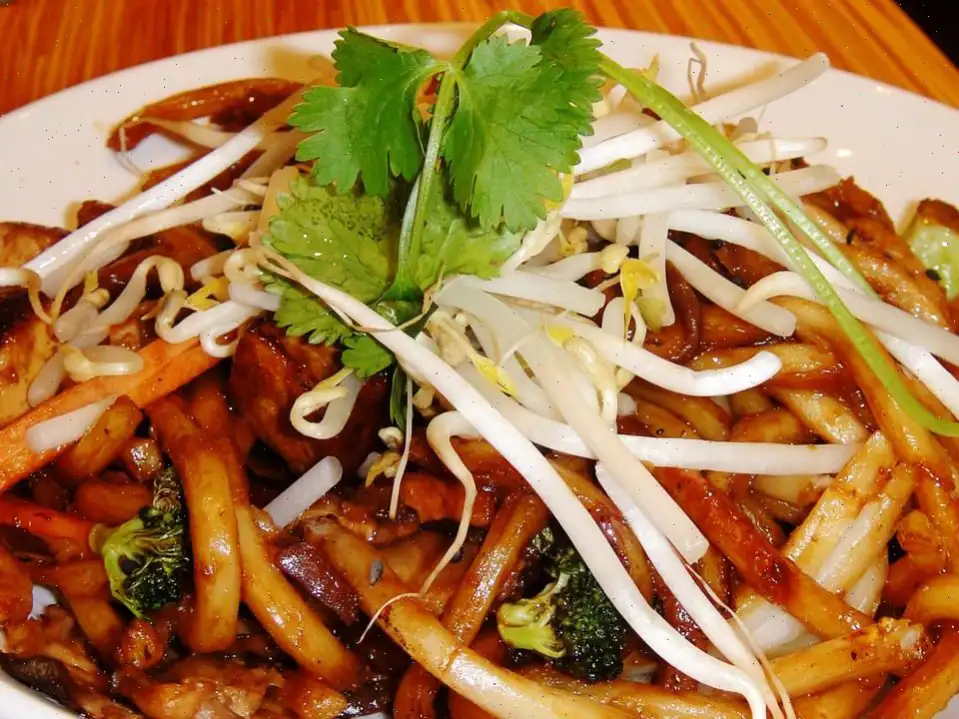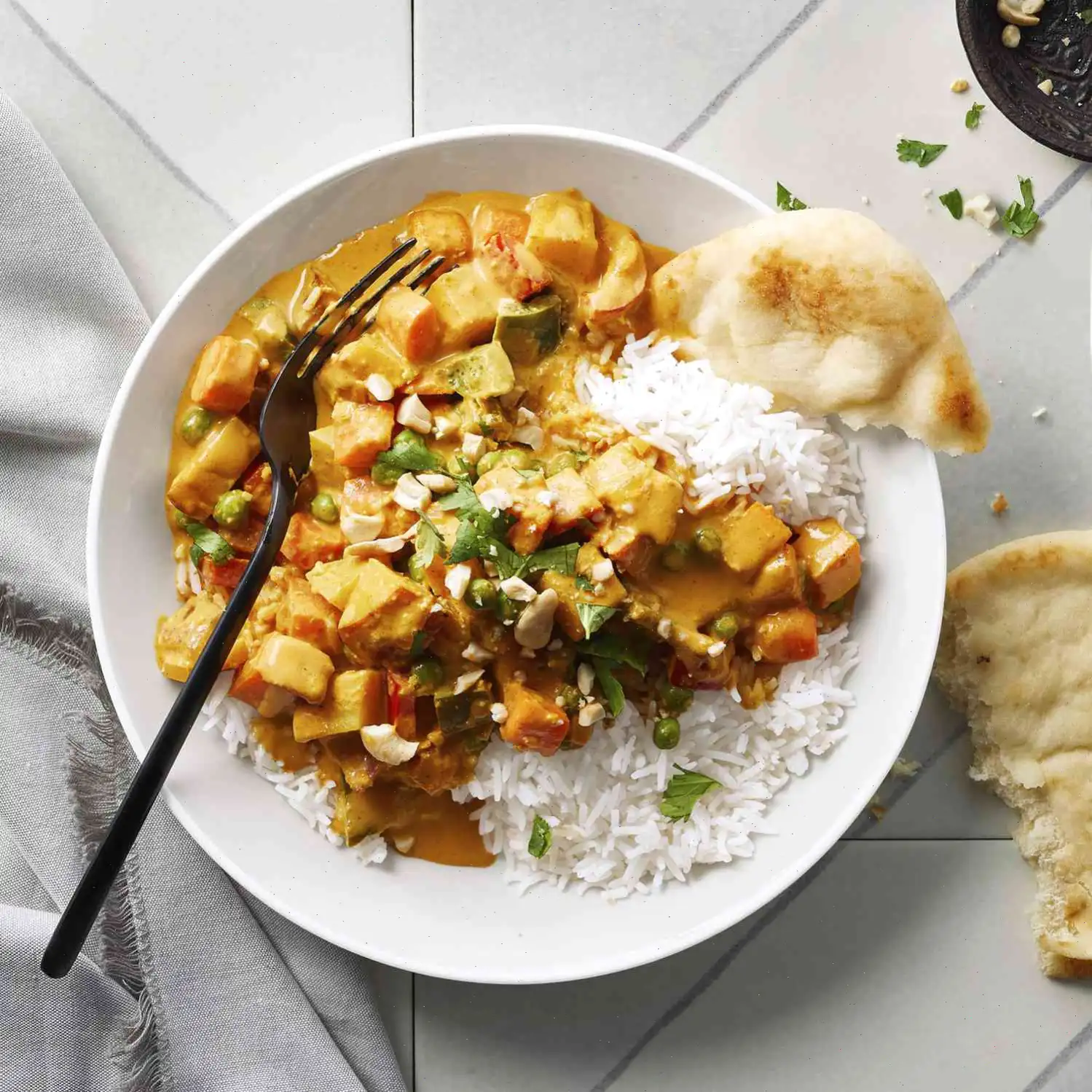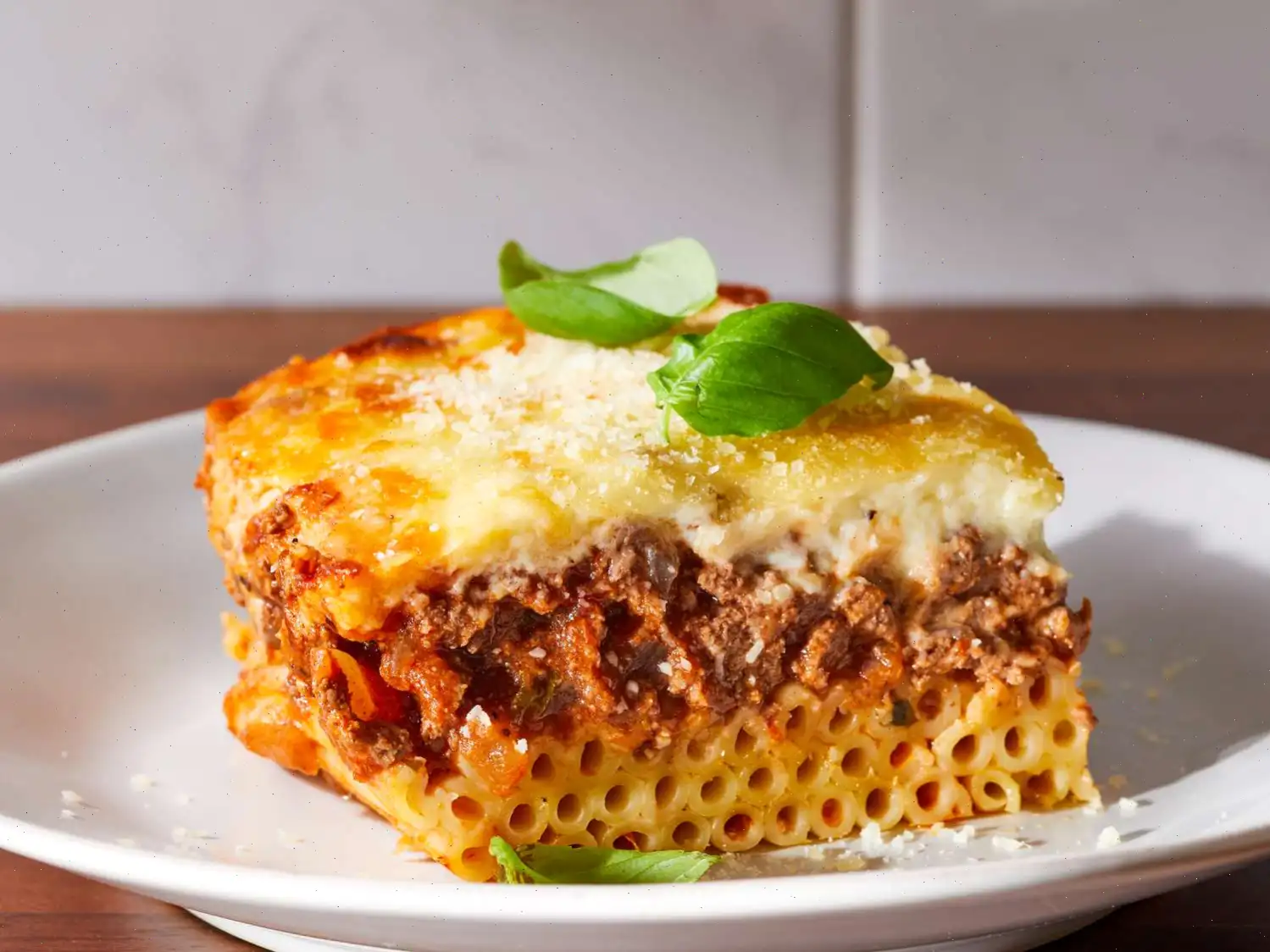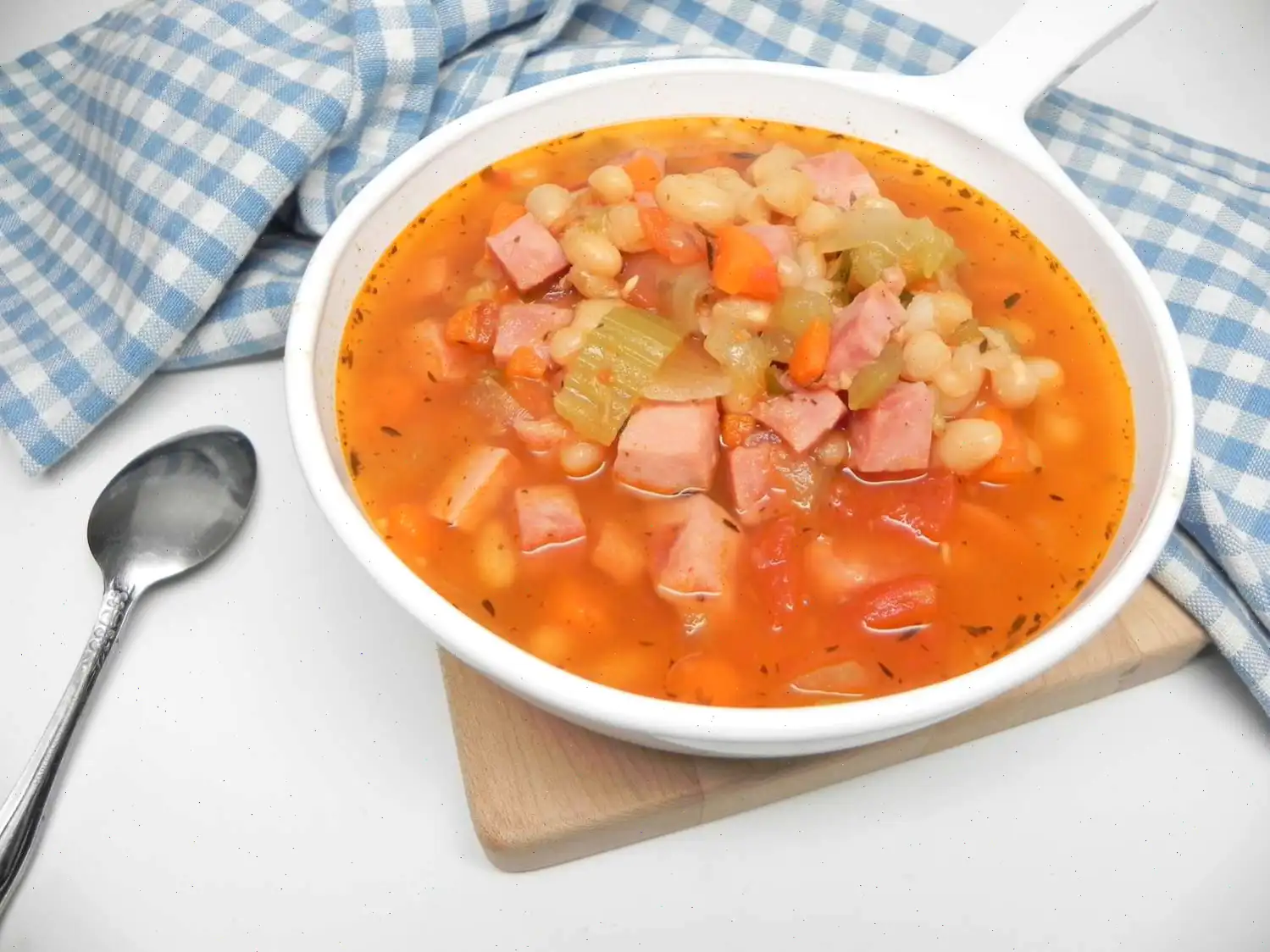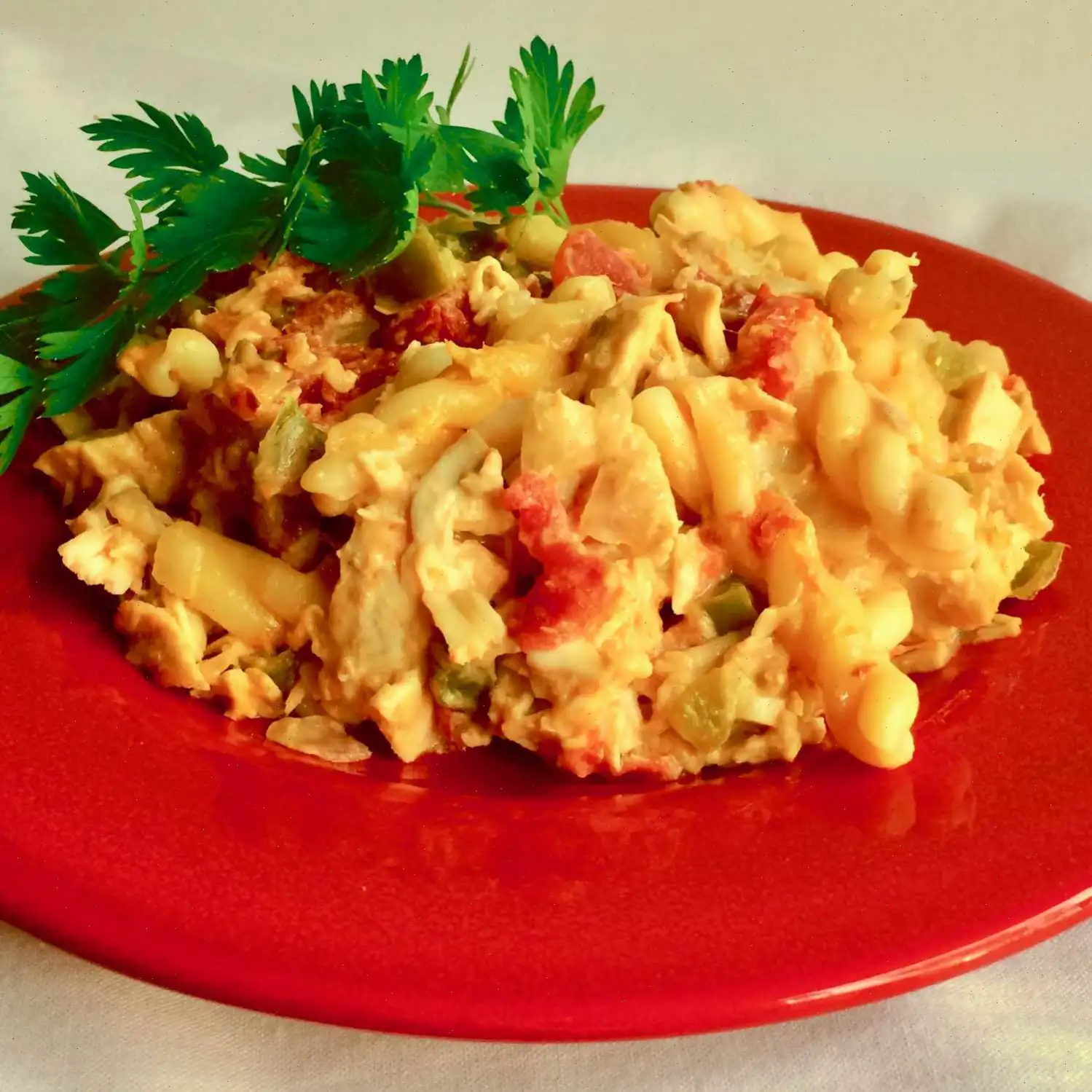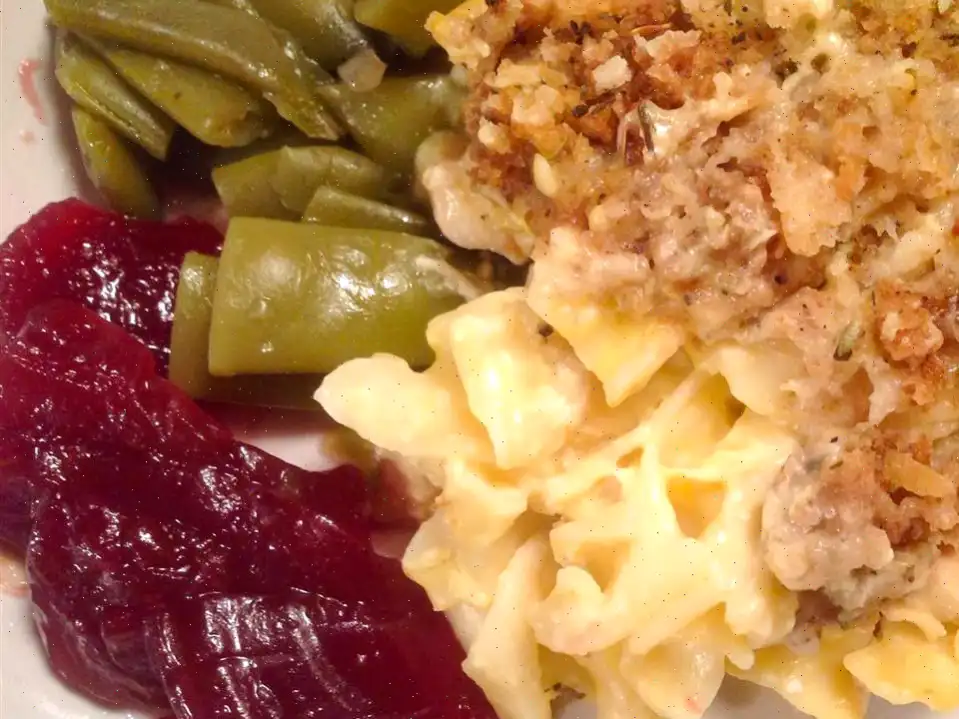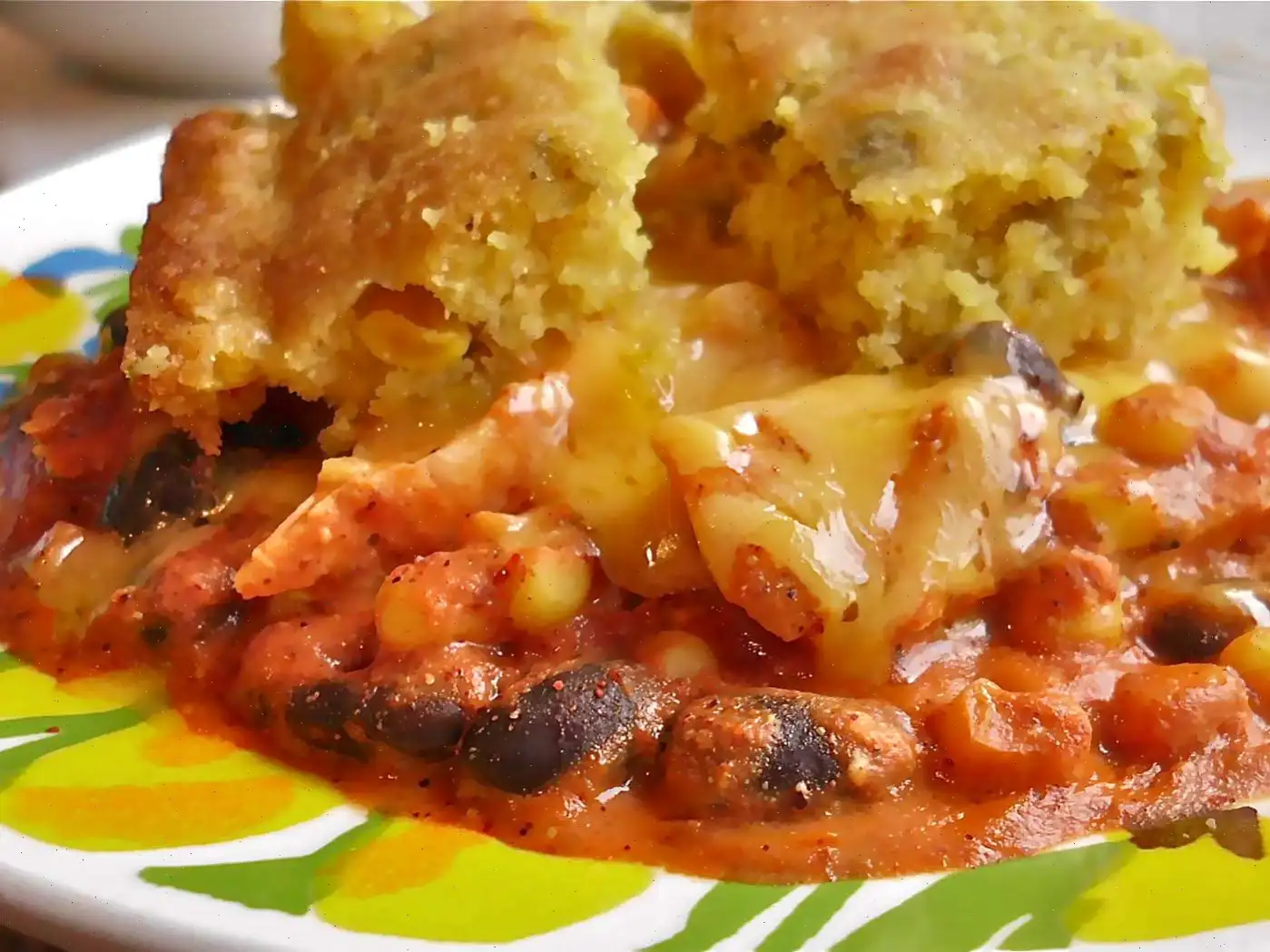
Japanese Pan Noodles Recipe
Ingredients:
- 1 (10 ounce) package fresh udon noodles
- teaspoon sesame oil, divided, or to taste
- 2 cups chopped broccoli
- green bell pepper, cut into matchsticks
- 2 small carrots, cut into matchsticks, or to taste
- zucchini, thinly sliced
- 2 tablespoons soy sauce
- 2 tablespoons mirin (Japanese sweet wine)
- 1 tablespoon chili-garlic sauce
- teaspoon minced ginger
Directions:
- Bring a large pot of lightly salted water to a boil. Cook udon noodles in the boiling water, stirring occasionally, until the noodles are tender yet firm to the bite, about 10 to 12 minutes. Drain and rinse with cold water, then stir in a few drops of sesame oil.
- In a large skillet, heat the remaining sesame oil over medium heat. Add the broccoli and cook until it turns bright green and remains crunchy, about 5 minutes.
- Add the green bell pepper and carrots to the skillet. Continue cooking, stirring occasionally, until they start to soften, about 2 minutes.
- Next, add the zucchini to the skillet. Cook for an additional 2 minutes or until the zucchini softens slightly.
- Pour in the soy sauce, mirin, chili-garlic sauce, and add the minced ginger. Stir everything together to combine.
- Finally, mix in the cooked udon noodles. Continue to cook and stir for 1 to 2 minutes until the noodles absorb some of the sauce.
Cooks Note: You can customize this stir fry with your favorite vegetables, such as bamboo shoots, bok choy, or onions. Feel free to add any protein of your choice to make it more substantial.
Nutrition Facts (per serving):
| Calories | 258 |
| Total Fat | 2g (2%) |
| Saturated Fat | 0g (1%) |
| Sodium | 1069mg (46%) |
| Total Carbohydrate | 50g (18%) |
| Dietary Fiber | 3g (9%) |
| Total Sugars | 5g |
| Protein | 7g (14%) |
| Vitamin C | 56mg (62%) |
| Calcium | 46mg (4%) |
| Iron | 1mg (7%) |
| Potassium | 359mg (8%) |
* Percent Daily Values are based on a 2,000 calorie diet. Your daily values may be higher or lower depending on your calorie needs. Nutrient information is not available for all ingredients. If you follow a medically restrictive diet, please consult your doctor or dietitian before preparing this recipe for personal consumption.
Japanese Pan Noodles is a simple yet flavorful dish that has captured the hearts of food lovers around the world. This dish combines the chewy goodness of udon noodles with fresh vegetables and a savory sauce. While it's often served as a quick weeknight meal, it has deep cultural roots and some interesting regional variations.
History and Origin of Japanese Pan Noodles
The origins of Japanese Pan Noodles can be traced to the broader history of stir-fried noodles in East Asian cuisine. While the precise origins are difficult to pinpoint, the combination of stir-fried vegetables and noodles has been a staple in Japanese kitchens for centuries. It is a variation of the classic Japanese dish known as "yakisoba," which means "fried noodles." Traditionally, yakisoba uses thin, wheat-based noodles and is served with a variety of meats, seafood, and vegetables, sauted in a sweet and savory sauce.
Japanese Pan Noodles, however, uses udon noodles, which are thicker and chewier. Udon's history goes back to the 9th century when Buddhist monks are believed to have brought wheat noodles from China to Japan. Over time, udon has evolved into a beloved comfort food across the country.
Regional Variations and Unique Features
Although the dish itself is often associated with Tokyo, its variations can be found throughout Japan. For example, in Osaka, a more robust version of stir-fried noodles with vegetables and meat is often served with a distinct soy-based sauce. In contrast, the version of Japanese Pan Noodles that we know today is often lighter, focusing more on the freshness of the vegetables and the umami flavor of the sauce.
Regional differences also come into play when it comes to the type of vegetables and proteins used. For instance, in the northern regions of Japan, bok choy and mushrooms are common additions to the dish, while in southern Japan, seafood such as shrimp or crab may be added for extra flavor. In terms of noodles, while udon is typical in this version, variations like soba noodles or even rice noodles are sometimes used based on local availability.
How It Differs from Similar Dishes
Japanese Pan Noodles shares similarities with other stir-fried noodle dishes like Chinese chow mein or Thai pad see ew, but it has its unique characteristics. The key difference lies in the noodles themselvesudon noodles are thick, chewy, and slightly more filling than the thinner, more delicate noodles used in other stir-fries. Additionally, the sauce used in Japanese Pan Noodles is typically lighter and includes ingredients like mirin (sweet rice wine), sesame oil, and chili-garlic sauce, giving it a distinct savory-sweet flavor profile.
Another difference is the absence of heavy seasonings or sauces found in other Asian stir-fry dishes. Japanese Pan Noodles tend to focus on the natural flavors of the vegetables, which are lightly cooked to retain their crunch and color. The dish is more about balance than boldness, which sets it apart from other, more heavily spiced noodle dishes.
Where It's Typically Served
Japanese Pan Noodles can be found in a variety of settings, from casual family dinners to trendy ramen shops and international restaurants. It is commonly served as a quick meal in Japan, either at home or in casual dining spots. In the United States and other Western countries, Japanese Pan Noodles have gained popularity due to their health-conscious ingredients and their ability to be easily adapted to different dietary preferences. It is often found on the menu at Japanese or Asian fusion restaurants, and even at fast-casual chains like Noodles & Company, where it is served with a variety of toppings and protein options.
Fun Facts About Japanese Pan Noodles
- Japanese Pan Noodles are a great dish for meal prep. The noodles can be stored in the fridge for up to 3 days, making them perfect for busy weeknights.
- The use of chili-garlic sauce adds a bit of spice to the dish, but you can adjust the heat level to your preference by adding more or less sauce.
- Udon noodles, the star of this dish, are one of the oldest types of noodles in Japan and are believed to have been brought over from China during the Tang Dynasty.
- This dish is very versatile. You can add your favorite vegetables like bell peppers, snow peas, or even baby corn. Additionally, proteins such as chicken, beef, or tofu can be included for extra richness.
- Japanese Pan Noodles can be easily made gluten-free by substituting the udon noodles with gluten-free options, making this dish suitable for those with dietary restrictions.
You can listen to this recipe in AI audio format. Simply click the play button below to listen to the content in a format that suits you best. It’s a great way to absorb information on the go!
FAQ about Japanese Pan Noodles Recipe
Comments
Raymond Diaz
07/01/2023 09:23:40 AM
Straightforward yet tasty. I believe the recipe aims to be low in calories, but I felt it required about half a tablespoon of canola oil to ensure the vegetables cooked well. Besides that, I followed the instructions, just swapping the noodles for a 7 oz pack of Ka-Me vacuum-sealed fresh udon. The balance of vegetables, sauce, and noodles was spot on, yielding two ample portions. I paired it with some leftover ginger-chicken meatballs. Remember to refer to your noodle package instructions, especially if using fresh noodles like I did, as they don't require boiling.
Brenda Hill
08/22/2022 07:46:05 AM
The description promised fresh udon noodles, but the instructions called for boiling them, suggesting they were actually dried. This recipe is confusing as it doesn't specify whether to use 10 ounces of dried udon or fresh udon, making it difficult to follow.
George Rodriguez
10/30/2022 07:11:18 PM
Reminiscent of Noodles & Co's Japanese Pan Noodles, this dish is a hit in our household. I opt for a mild spice level and often customize it with extra veggies or more heat. It's a fantastic option for a quick and easy weeknight meal, and even my kids are fans of it.
Daniel Gonzalez
03/16/2023 01:09:44 PM
Great recipe! I decided to add more of the sauce ingredients for extra flavor.


